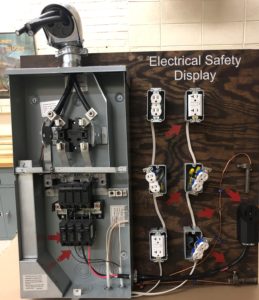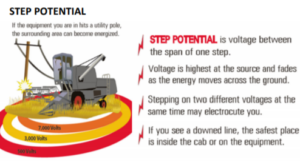Charles V Privette, III
Hometown: Pendleton, SC
Position: Department Chair, Agricultural Sciences

I grew up on a small beef cattle farm in Pendleton, SC, where my dad worked with Clemson Extension as their Irrigation Specialist. I then, in turn, would travel with him as a kid to farms and field days across the state. This then led to me following in his footsteps and obtaining my undergraduate degree in Agricultural Engineering from Clemson University. I then went on to get my M.S. degree and gained employment with Clemson Extension. Then with the completion of my Ph.D. in Civil Engineering, I pursued a career in teaching and research with the Biosystems Engineering Department. From there, I am currently Department Chair for the Agricultural Sciences Department at Clemson University which houses the Agribusiness, Agricultural Education, and the Agricultural Mechanization and Business Programs.
How did you hear about the Ag Safety program?
When I originally started working for Clemson Extension Service in 1999, I was hired as the Farm Safety and Health Specialist. I was in that position until 2006. One of my main interests in that position, when I applied for it, was the fact that my own grandfather when I was young, died from a tractor rollover incident. He was putting in a stream crossing when his tractor rolled over and crushed him. Back then, ROPS were not that common, and many older tractors did not have them. I then moved on to other pursuits at Clemson in the areas of teaching and research, and my previous position went unfilled for many years. When I heard that an effort was back underway to reintroduce a farm safety program with the Extension Service, as my new role as Department Chair, I fully endorsed it.
How important is it for farmers and other people in agriculture to be safe?
Safety is one of those things most folks don’t really think about. We do the same job/function over and over but never experience the negative consequences of our improper actions. It then only takes that one time, and things change. Safety programs are that reminder about how we should operate.
How often do you run across the topic of agricultural safety in your position?
After serving in the role as an ag safety specialist, it seems I still run across this topic on a routine basis, whether it be with education outreach or with previous students or acquaintances that suffer from some incident that involves them. These have ranged from minor injuries, loss of limbs to even death.
What do you think the biggest concern is regarding agricultural safety?
I would say one of the biggest concerns with ag safety is that it is something that is typically kept on the top shelf. We acknowledge it, but we do not make it an active part of our day-to-day life.
Is there enough being done about teaching agricultural safety across the state of South Carolina?
From my experience with ag safety, even when I was getting things started back in the early 2000s, I always felt there was more I should be doing. The topic of ag safety is not just pertinent to one group of people. It covers all of us, whether we are young kids to older adults. The topics under ag safety are also not just for farmers. Most of the subject matter applies to many homeowners/landowners as well.
Are there any suggestions on how it can be improved?
There are many programs and curriculum already out there devoted to ag safety. The problem is getting that material in front of people in a meaningful way. Having an active safety program that provides age-appropriate training/demonstrations/awareness is important.
Describe the impacts that a safety intervention can have on children.
Over the years, one of the most interesting things I saw with children or youth safety programming is that it was actually a great way to also educate parents. When children would learn something, oftentimes, they then would start asking their parents “safety” questions which then, in turn, would educate their parents. After a child was picked up from a safety day camp, oftentimes, parents would immediately ask, “What did you learn?” I found that these day camps for kids were not only a great way to have interactive learning for kids but also a great way to educate their parents.
What is the biggest concern teaching adults about safety precautions?
In my years of working with ag safety, one of the biggest challenges in working with adults is changing safety behavior. After doing things a certain way for many years, we become accustomed to our routines. One may have grown up riding on one’s grandfather’s lap on their tractor, and now we allow our grandchildren to ride on our laps. This could even be a lawnmower. Changing this kind of behavior when it has kind of become the norm is difficult. One avenue I used to take advantage of was when I presented at various farmer meetings; I liked to invite not only the farmer but their spouse as well. When I talked about various safety issues and the associated risk, I oftentimes related it to having insurance. Most folks could relate to insurance, and so, therefore, the connection between ag safety and injury/death was more real. This oftentimes caught the spouse’s attention more than the farmer, who had always done something the same way for many years even though it may not have been safe. Ag Safety programs are that great reminder or little voice in our heads that can keep us from becoming a statistic.











